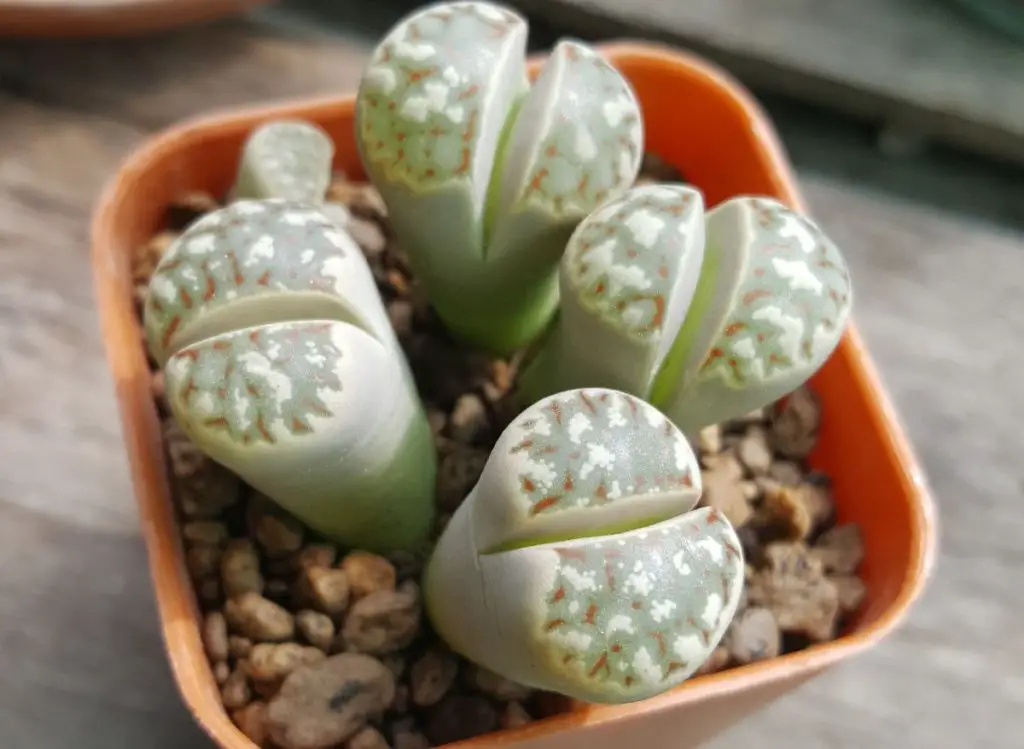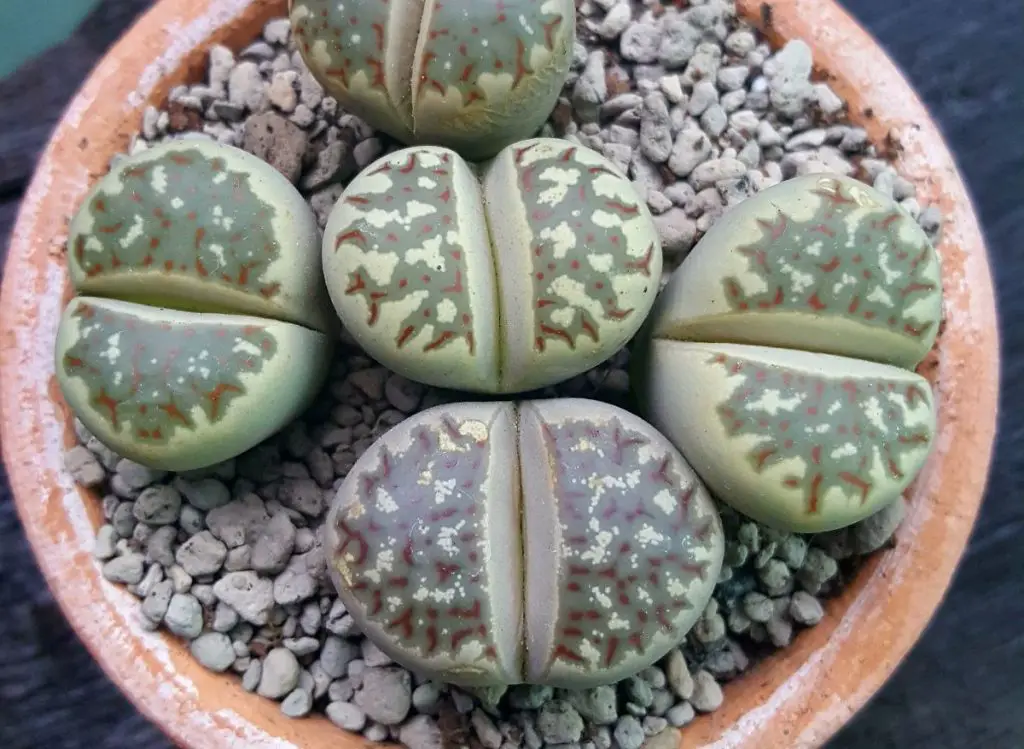
Lithops, commonly known as living stones, are some of the most fascinating and unusual plants you can grow. One of the most exciting things about Lithops is their ability to split, revealing new growth inside, which is a process that many gardeners find intriguing.
But how long does it take for Lithops to split? Generally, it takes about a month or two for Lithops to split, depending on the conditions. It is recommended to leave them be and let them do their thing. Typically, the old flowers should eventually pop off independently; if not, give them a gentle tug.
Read on to find out everything you need to know about the splitting process of Lithops and the factors that influence it. Check out this article if you want to know when do Lithops flower.
Why Does Lithop Split?
The process of Lithops splitting is known as fissure, and it is a vital part of the plant’s growth cycle. Lithops will generally split when ready to produce new leaves or flower buds. Typically, a fissure occurs when new leaves that are forming inside the plant’s existing leaves press against the outer layer (Source: University of Wisconsin-Madison Division of Extension)
This pressure causes the outer layer to crack, revealing the new leaves inside. The new growth goes on to replace the old leaves, and the process starts again.
Remember that Lithops splitting is not an indication that the plant needs to be repotted. It is also recommended that you avoid disturbing the plant’s roots during or after the splitting process since this can cause stress to the plant.
Instead, I recommend you wait until the new growth is well-established before considering repotting. In the meantime, maintain consistent watering and avoid exposing the plant to extreme conditions.
How Long Does It Take for Lithops to Split?
The splitting process of Lithops can take anywhere from a few days to several weeks, which is primarily dependent on the growing conditions and the age of the plant. Typically, younger Lithops plants will split faster than the older ones.
For instance, the age and size of the plant largely determine the length of time it takes for Lithops to split. Typically, younger, smaller plants will split faster than older, more mature ones.
In addition, the type of Lithops and the growing conditions, such as temperature, light exposure, and humidity, can also influence the process. In general, higher temperatures and humidity levels tend to accelerate fissure, while cooler temperatures can delay it.
Remember that the temperature, lighting, and watering schedules all play a role in the splitting process. Generally speaking, if your Lithops plant is well taken care of, you can expect it to split in a few days to a few weeks. If you wonder why your Lithops aren’t splitting, I encourage you to watch this interesting video.

Factors Affecting The Splitting Process of Lithops
Remember that the age and size of the plant, as well as growing conditions, can influence the timing of the splitting of lithops. As you observe this process, you’ll appreciate the uniqueness of the Lithops and understand why it has become such a beloved plant by most gardeners worldwide.
Here are the factors that affect the splitting process of Lithops:
1- The Amount of Light That The Plant Is Receiving
One of the factors that can affect the splitting process of Lithops is the amount of light that the plant is receiving. When Lithops split, it is usually in response to a lack of water or nutrients.
During this process, the plant will absorb nutrients and moisture from its outer leaves, causing them to shrink and wither. If the plant is not receiving enough light, it may take longer for the leaves to dry up and split. On the other hand, if the plant is getting a lot of light, the splitting process may happen faster.
2- Temperature
Another factor that can affect the splitting process of Lithops is the temperature. Generally speaking, Lithops prefer temperatures between 60 and 80 degrees Fahrenheit. If the temperature is too low, the plants may become dormant and not split at all.
Conversely, if the temperature is too high, the splitting process may be accelerated, but the plant may also suffer from heat stress. It is essential to monitor the temperature in the growing area to ensure that it is within the optimal range for your Lithops plant.
3- Watering
It is also crucial to ensure that your Lithops plant is getting enough water during the splitting process. Ideally, Lithops should be watered when they are completely dry and have lost all signs of moisture.
Watering the plant during the splitting process can help to speed up the process by providing the moisture that the plant needs.
However, it is crucial not to overwater the plant as this can lead to root rot and other types of fungal infections. As a general rule of thumb, it is best to water Lithops sparingly but frequently during the splitting process.
What to read next:
- Understanding the Fascinating Lithops Growth Cycle.
- How to Choose the Right Gloves for Cactus Gardening?
- How To Efficiently Deal With Splitting Lithops: a helpful guide.
Wrapping Up
The splitting process of Lithops is a fascinating and complex process that can take anywhere from a few days to several weeks. While age, light, temperature, and watering schedules all play a critical role in the splitting process, taking care of your Lithops plant is the most essential factor.
I believe that by providing your plant with plenty of light, optimal temperature conditions, and proper watering, you can help to speed up the splitting process and ensure that your plant thrives.

